 Vignette#= Vignette#=3V 0nnn Days Alive |
with RobbyFrom birth on, people are first in life. Things come later. |
 at 8-9 |
| What do we see of Peggy’s learning about things in the world, of other beings, and of communication and language through the specific incidents accessible in these materials? | How can we represent simply changes in relationships, communication and language use through the 278 weeks of the thread? See LC3cBL03< Speech Codes |
| 3Vgn#: Parents’ Text Notes OR remarks on Video=> | |
| 0007: 3V0040.01 SHOWING OFF PEGGY AT LOGO; SIBLING REACTIONS 3/3/78; 1;9
Peggy is gradually being introduced at the Logo Lab. On Saturday, the 25th, she, Gretchen, Robby and I trekked over to loan Robby’s camera to Jose Valente — who needed such a one for his project at Fall River. Peggy met Jose and Greg at that time. Yesterday, I took in part of a paper to Seymour — and we took the whole family. And encountered Danny, Hal, Glen, Seymour, Gordon Oro, Gary Drescher. Within the past week Peggy has become much more alert generally and in far better control of herself than before. This appeared in several ways at once! She now travels around in her crib, she prefers to be carried on the chest and looking over the shoulder to being held by arms in the feeding position, when in the infant seat, she readily turns her head to follow peoples’ movements where last week she did not do so. Miriam has tried playing with her but is getting frustrated by having too little feedback. Robby has said that he hopes any other child we have will be female “because I like having little girls around.” I interpret this as a hope to preserve his specialness as a son. But Robby some times feels threatened/overwhelmed at the thought of so many girls and says he would prefer a brother. 4/23 Gretchen made additional margin notes on Peggy not wanting to feed in the middle of the night. |
Comments: The Logo Lab, created by Seymour Papert in the mid 1970’s, was then affiliated with the MIT Artificial Intelligence Laboratory and the MIT Division for Study and Research in Education. |
| 0008: 3V0052.01 PEGGY BEGINS SLEEPING THROUGH THE NIGHT 3/15/78; 1;21
Peggy is showing considerable motor development now. Starting yesterday, when left alone in her crib, she has been straining very hard to lift her head and succeeding (before collapse). By lifting her head, I mean raising it straight up by contracting her neck muscles. She gets even higher by raising herself on her arms — this permits her crown to be seen down to the eyes above the top of the crib bumper on a horizontal line. For the first time, she rolled over on her back when put on her stomach. (She did so at least twice.) Robby took Peggy’s picture while straining to raise her neck and, after, suggested we keep a note book describing her development. My general impression is that she now shows about the same motor development as a new born kitten (this is a kind of dumb comment — the intent of the statement is to mark how much more competent she is now than at birth). |
Comments: Since Robby had been the focus of our first studies in the Logo Lab, LC1, and integral in activities of subsequent studies of LC2, this was a natural suggestion for him to make. |
| 0033: 3V0138.03 SIBLINGS: PLAYING WITH ROBBY AND MIRIAM: 6/9/78, 4, 18
text recovery needed for this vignette |
0: |
| 0060: 3V0204.02 ROBBY, MIRIAM PLAY WITH PEGGY; OBJECT PERMANENCE DATA (8/14/78)
The second group of interesting observations with the toy focus on my first observations of Peggy’s crawling. Gretchen has remarked on Peggy’s ‘falling sideways’ and thereby going forward a little over the past few days. Today’s behavior was a clear extension of what may have been chance advances into a directed and repeated series of specific actions for accomplishing an obvious objective. Today, on the bed in a field of scattered rings, when all had been knocked out of her reach, Peggy set out to get the purple, green, and red rings – a good six inches beyond her. It could be no clear(er) that Peggy wanted the rings. She reached out toward them and cried when they were not accessible. Peggy pushed her hips up, falling forward and sideways at least half a dozen times as she reached out for and focused on the rings. She did get the purple and red rings but the green escaped her. Peggy gave up on the green ring and dropped the red. She rotated on her stomach and started to go after the orange ring with the purple ring still in her hand. Peggy intermittently reached for the orange ring and failing, brought the purple ring to her mouth. She reached with one hand as the other – when reaching with her right hand, holding the purple ring, she knocked the other ring away, but did not stop reaching for the orange ring with that hand. The ring was escaping faster than her progress. this activity all took place on an unmade bed where a crumpled sheet lay alongside the path between Peggy and the orange ring. Peggy pulled HARD on the sheet several times (but the ring did not move – being on a separate under sheet) then pulled the loose sheet to her mouth. Is this an accident ? Or is it a good trick Peggy has already mastered for drawing to her things beyond her reach ? When Peggy finally began crying over her failure, I placed the orange ring on a different part of the bed, on Peggy’s other side at the outer periphery of her reach. In her first attempt to get it, Peggy pulled on the bed sheet (the undersheet, on which she lay and which was not moveable as the over sheet was). Next, she reached with her hand. when she hit the orange ring, it flipped over the near edge and came within easy reach. When she finally grasped the orange ring, Peggy ended her excursions by rolling onto her back. My conclusions from these observations are that Peggy does not take account in her reaching of whether she already has some object in her hand; she knows that some surfaces are separable from their substrate and can be manipulated — but she doesn’t yet realize that to access a desired object by pulling at a surface that object MUST be on the surface; the second attempt to get the orange ring by pulling the fixed sheet indicates why this may not be so easy to figure out as one would first imagine. |
Note: Both children, on their own initiative, tried to ‘teach’ Peggy capabilities which she would soon master in any case. Sharing knowledge about neat phenomena and good tricks, e.g. backspinning a pingpong ball, are a pervasive and common feature of everyday life. |
| 0066: 3V0216.04 ROBBY PRETENDING TO SPEAK FOR DAPPER DAN; PEGGY TALKING TO TOYS AND SCURRY One of the toys not shown on videotape is Dapper Dan — a baby-size cloth doll. After the session, I propped Dapper Dan in the corner of Peggy’s playpen and left her with the two older children reading in the library. From my reading alcove, upstairs I heard a conversation going on. Robby “hid” outside the playpen behind Dapper Dan. When Peggy started talking to Dapper Dan, he responded in the appropriate turn. After a while this lost interest for him. Over following days, Peggy addressed Dapper Dan on occasion and received no response and has stopped doing so (recall she also used to address Scurry with the same expectation). Can we figure out some simple experiment which will permit us to determine how Peggy classifies things into speakers and non-speakers (or interactors and non-interactors)? |
If people are the first and most important other beings in an infant’s life, might we imagine that an infant would, based on limited experience, expect other people-like-things to have the same characteristics? Is anticipating speech really a bad default expectation? She apparently expected Scurry to converse as well. |
| 0086: 3V0233.08 DANCING, DISAPPEARANCE, AND REAPPEARANCE 9/12
Last night (9/12) Peggy sat in my lap as we played some records I brought back from Boston. Robby and Miriam had been cooped up inside this rainy afternoon, and when they heard some fast jigs and reels by De Danaan, went into their own version of step dancing which rapidly became a session of dancing around the house. Behind the couch, behind the chair where Peggy and I sat, around again and past the piano. Peggy turned and twisted to follow their path. Out through the short hall past the fireplace — then Peggy saw them reappear through the glass doors on the far side of the fireplace (a see-through one). Peggy was engrossed. Here were important people in her life doing unusual things, appearing and disappearing. These sequences must have been very mysterious. Especially when hidden factors and actions make prediction impossible. Sometimes the older kids would dance past the far side of the fireplace and could be seen. Other times they would crawl past the opening below the level of the high hearth and reappear in the fireplace window from the wrong side. RELEVANCE — The first incident testifies to Peggy’s experimenting with objects and space. The second highlights again the problem of conceiving of object permanence (in terms of predictable movement) when people with self-control behave in ways difficult to predict. Is object permanence developing the perspective that some things are not willful and mobile? |
Again, if people are the first and most important things in an infant’s life, might we imagine an infant would expect things to move of their own volition ? In their “chosen” way? Family, caretakers of infants are certainly recurrent in an infant’s experience. It should be no surprise that the permanent person precedes the permanent object by a country mile. |
| 0103: 3V0262.01 PEGGY IMITATING ROBBY NOISES.. 10/11
IMITATION — Peggy was sitting in her seat at the dining room table. Robby was seated at the table also. He made a series of loud kissing noises directed to her. Finally I asked him to stop. In the silence that followed, a soft but distinct repetition of the sound came from Peggy. Robby cried, “Look, Mom, she’s doing it! She’s answering me!” |
Clear natural evidence of behavior imitation at 15 weeks. But Rob’s description of Peggy as “answering me” captures the raison d’etre for the imitation. See also Vignette 123.1 Mimi Sinclair, Meltzoff Move |
| 0127 Notes: Engaging Infant Peggy Analyst: though I can’t recall the time or context, I do recall Professor Sinclair’s amused approval of Rob’s behavior, that “he certainly knew how to engage an infant.” The combination of “turn-taking” and engagement with a broad range of sounds are part of a fertile ground for the growth of communication into spoken language. Tech note 1:: the “P18D” above the clip in the right cell, links to a larger display with subtitles and transcript of both speech and action. The creation of these alternative representations takes time but will proceed as rapidly as the process permits. |
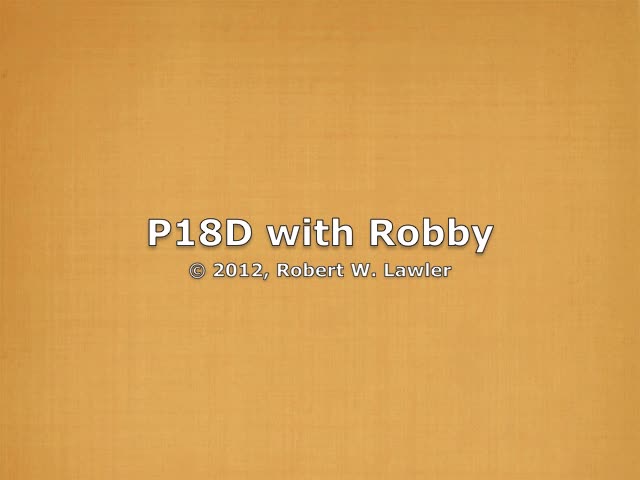
|
| 0155: | 
|
| 0260 Notes: An “Obstacle Course” for Peggy Engaging Peggy’s siblings in activities with her, of their choosing was in part to explore what they understood about the infant. It was also in recognition that Rob and Miriam had and would spend more time with her than I could. They had both the time and inclination to participate in her development, to the extent that they were willing, to report on changes they noticed before I had an opportunity to observe them in person. |

|
| 0301 Notes: “Wipeout” The joyful interactions of this high-energy-level activity suggest its kinship to Peggy’s domination chase games with Scurry |
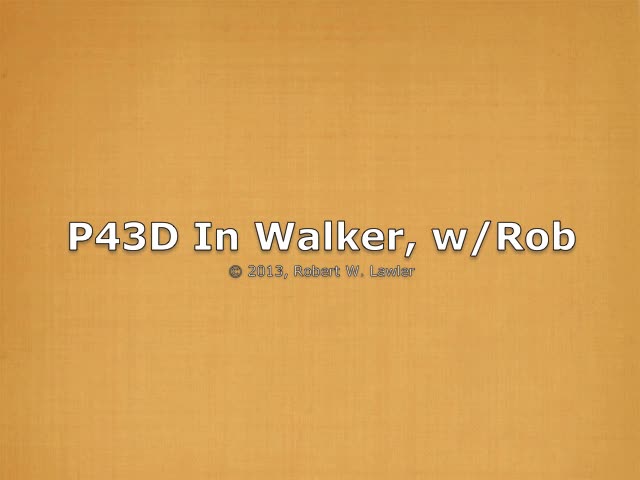
|
| 0314 Notes: “Under Arrest” In both P43D, Wipeout, and here, Peggy and Rob play together but from within entirely different scenarios of action. Peggy charges either to crash or to offer a gift. Robby spins a fantasy from hints in the accidents of the activity. |
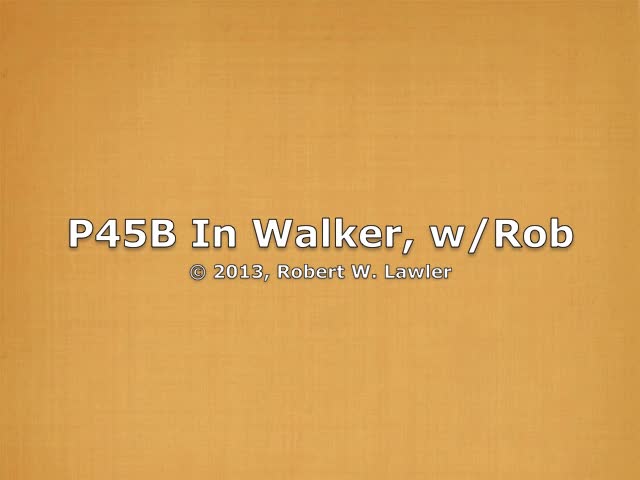
|
| 0329 Notes: 3V0619.01 CALLING ROBBY BY NAME. 10/3/79
Today Peggy started calling Robby by name. She called him repeatedly |
Question: Has she had an intimation that knowing the name of entities gives one the power to call them? |
| 0344 Notes: “Declining Walker Importance” Though Peggy still chases Rob in the walker, wall mounted pictures dominate her interest. Two factors appear relevant here. She began walking “solo” on day #321, likely by accident, leaning on a light weight table which began sliding under her weight (see 3V0321.1 Peggy Walking). Second, she became sensitive to vertical walls as sites of interesting pictures. (See 3V0344.2 Picture Gallery). |
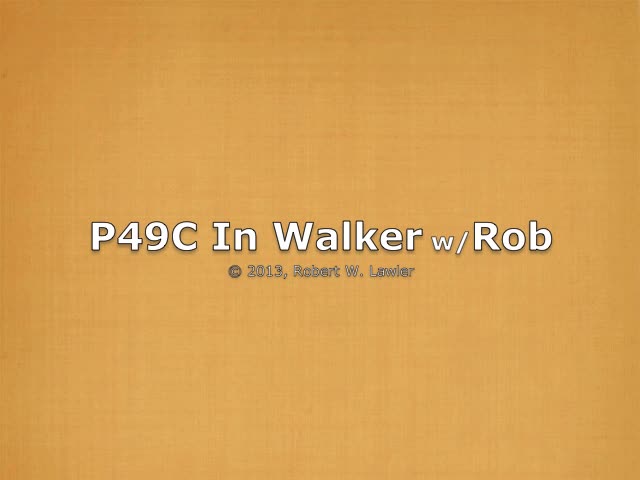
|
| 0366 Notes: “Frightened by a Balloon” Peggy’s Birthday! Robby hoped to entertain her with a new kind of of toy. Peg was not amused but terrified, in two exposures. A very sharp contrast to her response to the circle-rolling paper cup of withScurry P58A. Three obvious differences: The cup rolled in 2 dimensions while the balloon moved in 3. It did not respond so obviously to gravity as other objects did. It was nearly the size of a human head where the cup was hand-sized. Still surprised. |
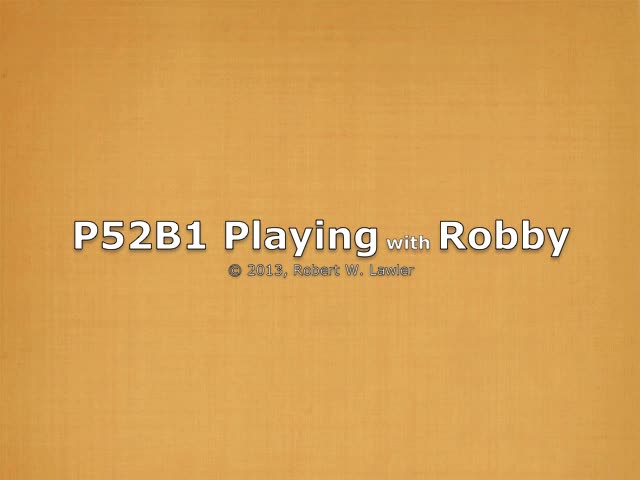
|
| 0366: “Following Peggy’s Lead in Reading from a Book: Puppies” Robby’s earlier recorded sessions with Peggy were primarily physical interactions. This is new for him, though Mom and Miriam had been reading to Peggy for many months. |

|
| 0399: 3V0728.01 [ROBBY…LOOKIT] VOCATIVE + VERB EXAMPLE (PLUS OTHERS) (1/20/80) Another example of a vocative-verb to element structure. Peggy, just now, (1/29/80) came out with another, more directly comparable to ‘Mimi…did-it’), she carried a book to Robby and said ‘Robby, do-it.’ |
Comments Cluster of Vignettes: Here and in following 3 cells we see closely related issues served by a variety of forms: Queen Peggy is naming subjects who should heed the imperative sense of her utterance, whatever its particular form. |
| 0403: 3V0729.01 [BYE, X] -> [BYE CHAIR]…[BYE TABLE]…[BY STAIRS]…(AS BEDROOM ENTERED) [BYE BED] [BYE CULDY]…BYE ROBBY… BYE MIMI…(BOB, FROM AFAR, “WHAT ABOUT DADDY?”) BYE DADDY] [BYE HOUSE…BYE CAR…BYE TREES…BYE HOUSE (A NEIGHBOR, THE CAR NOW MOVING) Going upstairs to have her diapers changed, Peggy recited a litany as we |
BYE? What gloss would you provide for this use? A regal declaration?”This is my world, but rest assured. I know all your names, respect you, and will return.” |
| 0420: 3V0754.01 [ROBBY OFFA CHAIR] (2/15/80)
Robby was given a chair by his great grandmother when he was 2. Peggy asserts the chair is hers (after all, she is the only one of an |
What the Analyst sees in these four utterances is a speaker with a social perspective expressing wants and/or relations, using shared words pragmatically. |
| 0425: 3V0762.01 [ROBBY… COM-PO-SI-TION] (2/23 /80)
(Bob calls to Robby from the living room -> no answer). Peggy says |
Part of speech: obviously, a word need not be a verb to express an imperative message. |
| 0447: “New Toys & Old Sharing Routines” Both Peggy and Rob examine the new toys. Peggy looks at the body parts. Rob concentrates on the rabbit’s internal noise-maker, which works only rarely. Robby prefers the “new toys” planned for the session, ejecting the Bear which Peggy wanted, not yet following her choices as Bob urges him to do. Rob’s aerial attack with the flying bear is possibly an echo of Gretchen’s early pretend flying, buzzing insect, approaching the baby to tickle her. |
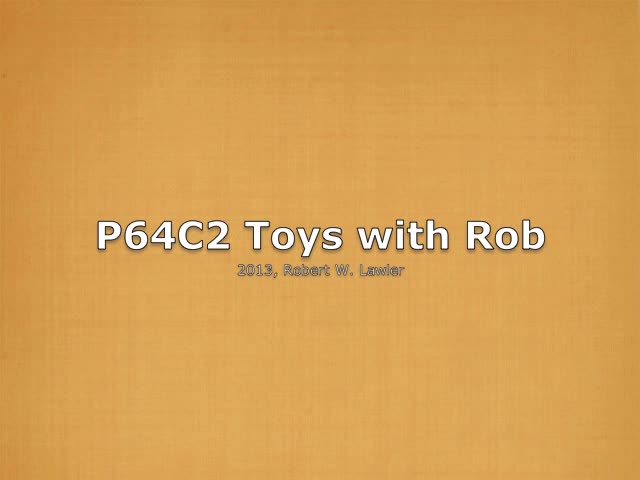
|
| 0447: “Chase without a Walker” Impatient with Robby’s focus on the new toys, Peggy asserts her choice of chase with her favorite weapoon, the yardstick. |
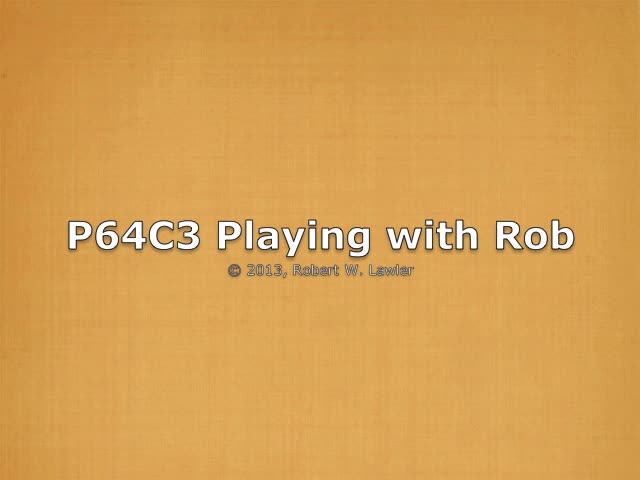
|
| 0459: 3V0789.02 ROBBY SCARED (3/21/80)
Robby was repairing the baby gate at the bottom of the stairs. His use |
Comment: Who would correct the child’s grammar? Not me! The import is clear from the context and her response. Under what sorts of circumstances and by what processes is a child’s fragmentary command of grammar regularized? |
| 0505: 3V0831.01 NAMES AS UNIQUE IDENTIFIERS: ROB IS A PERSON; SHE IS A TODDLER, NOT A PERSON. (5/2/80)
Peggy has two toys, a dog and a cat, which were once containers of My interpretation is that Peggy has used labels, names, as unique |
resolve video reference.: |
| 0552: “Robby Shares his Favorite Toys with Peggy” Robby’s collection of matchbox cars was his favorite “grown up” toy. Cautiously, he introduced them to Peggy, telling her names of their kinds, which she tried to repeat but almost certainly had little notion of their meanings. |

|
| 0566: “Robby reads from The Pokey Little Puppy” Robby focuses on reading the text and not on Peggy’s reactions to what he was doing. Bob urged him to pay more attention to Peggy. She took the book from him as Episode F begins. |

|
| 0566: “Robby reads from Puppies, Adjusting to Peggy’s Way” Peggy began in control of the book. Rob, worried about it falling apart, took back the book and started reading the usual way. Peggy then switched to “reading” the Pokey Puppies on her own. That day was his 12th birthday. |

|
| 0636: “Playing with a Ball; Attempting Conversation” When rolling a large ball from each to the other was all over the room, we switched focus to a small bouquet of paper flowers as a topic for talk. |

|
| 0643: “Rob helps Peggy Read a Special Issue Magazine about Foxes” What begins as a reading session, becomes more an exhibit of the difficulty of making enough sense of a child’s speech to have a conversation. Peggy dominates the talk. Her enumeration of “dogs” in episode C reflects the counting of pre-conservation children (NB., the ClipNote count of Cada utterances is accurate). Peggy’s “correction” of Robby’s pronunciation of /kuldah/ in episode C show her certainty of what she knows, and her attempt to replicate the word “person” in episode D exhibits her eagerness to learn. Robby did well in holding up his part. |
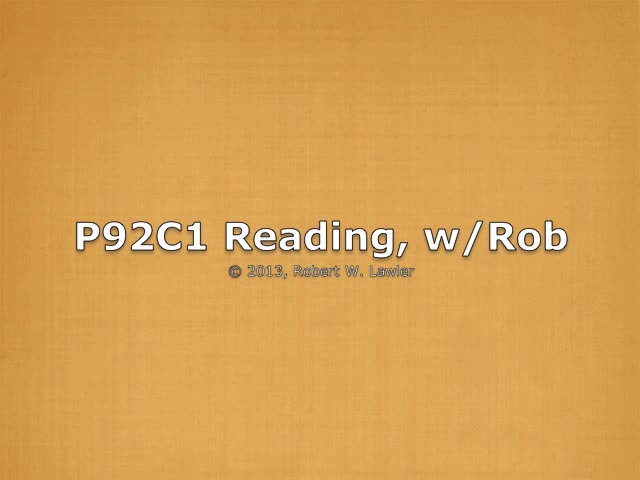
|
| 0643: “Toys, from Pooh-pooh to Dapper Dan” Starting with a stuffed tiger, Peggy wanted the baby tiger (Pooh-pooh), then a human doll, and a small tinkling rollabout. She stowed them in a nearby box. Peggy focused on Dapper Dan, a doll with sturdy clothing fasteners for child practice. |

|
| 0643: “Face Part Names, Dancing with a Bear, Back to Dapper Dan” Our family room was home to Peggy’s toys. We all were delighted to share what we knew with her. Peggy had various opportunities when she made choices. In such an environment, Vygotsky’s notion of the “zone of proximal development,” the suite of things and activities that held her interest is a good guide on the path of her development. |

|
| 0645: 3V1072.01 TRYING TO WAKE UP ROBBY. (12/29/80)
Everyone got up early to get Bob, Peggy, and Miriam off to Boston. |
|
| 0653: 3V0653.01 [ROBBY RUN] (LATER) [KULDAH RUN]. (11/6/79)
Watching Robby trot down the drive to the mailbox – “Robby run.” |
Comment: Two instances: production of two word declarative sentences. One verb, “run”. Two well-known nouns, “Robby, “Culdah” |
| 0658: 3V1089.0 A TRICK ON ROBBY (1/15/81)
Peggy was sitting in the big chair with Bob when Robby walked in and |
The Importance of Jokes: Mimi Sinclair mentioned an early sign of mastery of an issue is a child’s ability to make jokes about it. Early on, Peggy declared objects were “gone” when hiding them behind her back. That misrepresentation (a lie, if you must) is a deception about objects represented by a single word. Here, Peggy’s joking reaches for the symbolic — it is about a suite of words that represent imagined things. |
| 0664: “Dances with Bears” Teddy is again the central actor, with Rob and Peg facing opposite directions on opposing arms. Peggy’s dance step looks appropriate for jigs. |

|
| 0715: no detail source text available Peggy’s Imitation of Robby [“yes sir”, to Gretchen] |
No comment. |
| 0727: “London Bridge is Falling Down” The well known song and artwork of this book is so engaging to literates that it can distracts them from their audience, in this case Peggy. This session disappointed her and urged a search for a other alternatives. 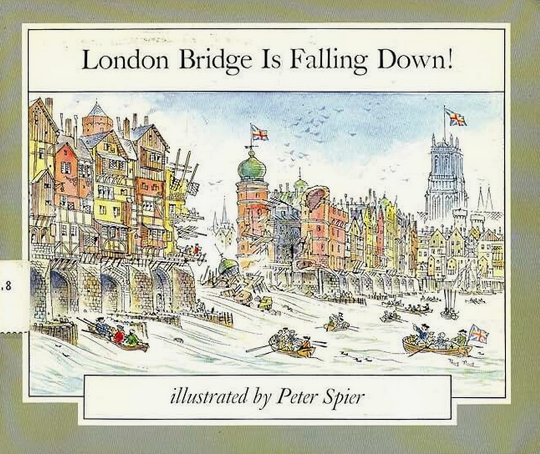
|

|
| 0727: “The Cat in the Hat & London Bridge” Robby’s grown up style of reading is here in high contrast with Peggy’s different way of using and learning from books. |

|
| 0727: “Making a Puzzling Device Work; negating a verb” The pop-up toy (a small figurine) worked by principles Peggy knew nothing of. The base was a suction cup, which might be brought to the mouth to wet. Pressing down on the figurine would compress an inner spring and evacuate the suction cup chamber. When air leaked under the cup, the compressed spring would be released, popping the object into the air. (So I imagine.) At the end of Episode D, Peggy asserts the device does not work. She does so by coupling a negative head shake with the probable word “works.” Is this conjunction of word and gesture an ur-form of a very common grammatical construction? |

|
| 0734: “Where to Look For a Lost Object? Peggy’s Giving Routine” Peggy’s “gone” objects were uniformly hidden behind her back. Is it a bizarre speculation on her part that a lost penny might be hiding (or hidden) behind a larger, easily movable object? In episodes D and E, Peggy’s Giving Routine begins to conflict with a more mercantile notion of ownership. Robby arranges for her to end up with the coins anyway. |

|
| 0734: “The Conflict Begins to Deepen” Peggy’s actions are rooted in a “joke” routine which, basically, is about knowing some appearances aae deceptive, sometimes things appear to be “gone” unless you remember where they are or have effective ways to find them. Here, Robby appears to be trying to extend that notion to cover cases where objects are more thoroughly “hiddden.” In episodes E and F, the discord suggests the limits of Peggy’s Giving Routine: the recipient must return the shared goods, pronto. When this does not happen, “Peggy: [complains,gesturing to recover them] ~they’re ~me(?)” (Is this an ur-form?, a “pre-regular possessive”?) |

|
| 0782: 3V1543.01 PEGGY IS READY FOR LIQUID CONSERVATION TEST: POURING SODA, SHE OBSERVED THAT HER GLASS IS TALLER THAN ROBBY’S; NO DETAIL (4/14/82) | Comment This does not pre-judge the outcome. It suggests she is sensitive to some of the basic notions that are engaged in the issue |
| 0991: “Angus Lost (1)” Sitting together, Robby reads to Peggy. Bob intervenes, proposes again Rob’s following Peggy’s interest in what she sees in the book. |

|
| 0991: “Angus Lost (2) Rob continues reading Angus’ story, but is more open to interruption. Bob raises question of whether Peggy knows any dogs that are like Angus. Peggy reveals her classification categories.” 
|

|
| 1090: “New Apprentice To a Puzzle Master” Peggy is working on 4-piece puzzles. She knows that 4 pieces need to fit in the frame, but has yet to grasp the notion that one needs to select pieces whose irregularities mate, which share design features across piece-edge boundaries, and that when a piece is selected and aligned with its destined spot avoiding rotation is important. Robby helps her with piece and target space selection, corrects a rotation error and lets her insert that final piece to get “one for Peggy.” |

|
| 1090: “Two Puzzles Completed Before Recording File End,” The pair work well together. Credit belongs to Robby for patient watchfulness, nipping every error in the bud and providing direct instruction on changes required. This prevented the built up frustration leading to disengagement. |

|
| 1603: “Rob Takes a Test As an Example for Peggy This simple was used in masters’ thesis research with kindergarten children. Its focus was on what children knew about words before learning to read. |

|
| 1949: “Peggy Blows the Whistle on Rob, Argues with her Dad” This conversation at Peggy’s age 5 years, 3 months reminds us that “Kids Say the Darnedest Things,” as Art Linkletter’s 1950’s TV show establilshed. |
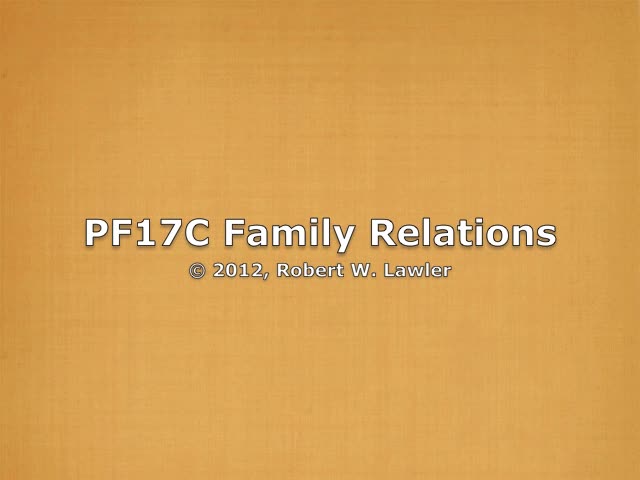
|
